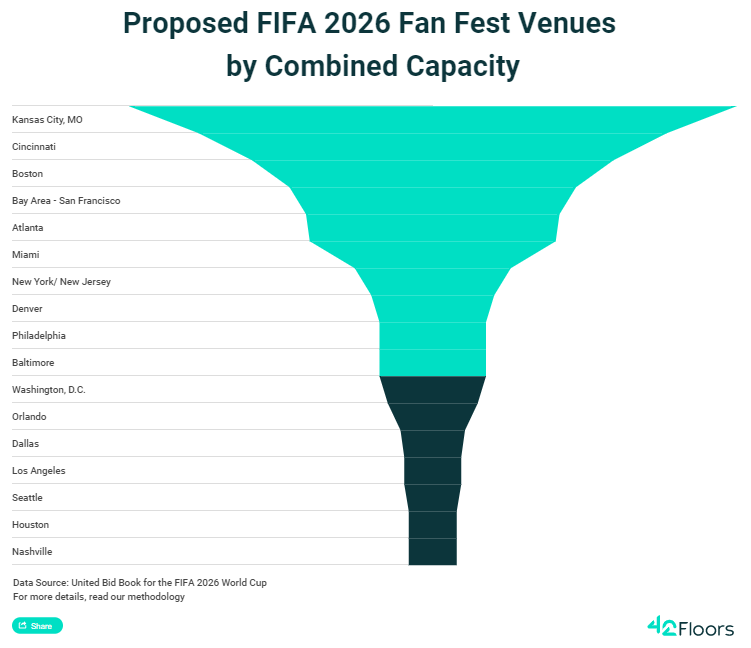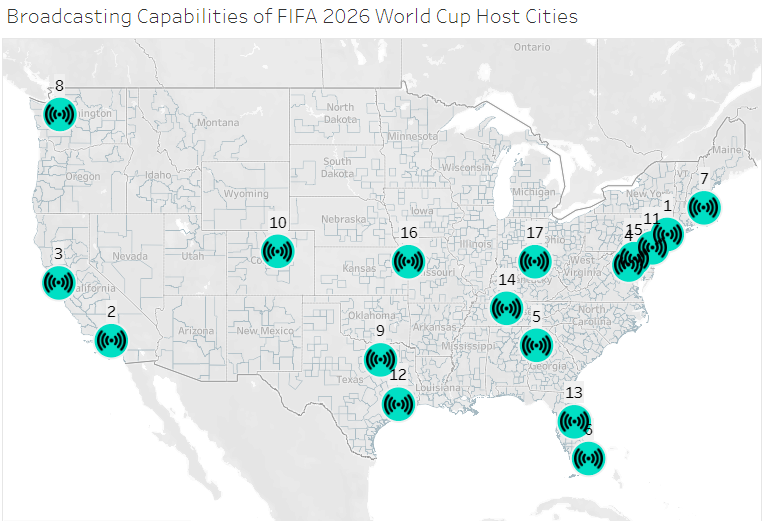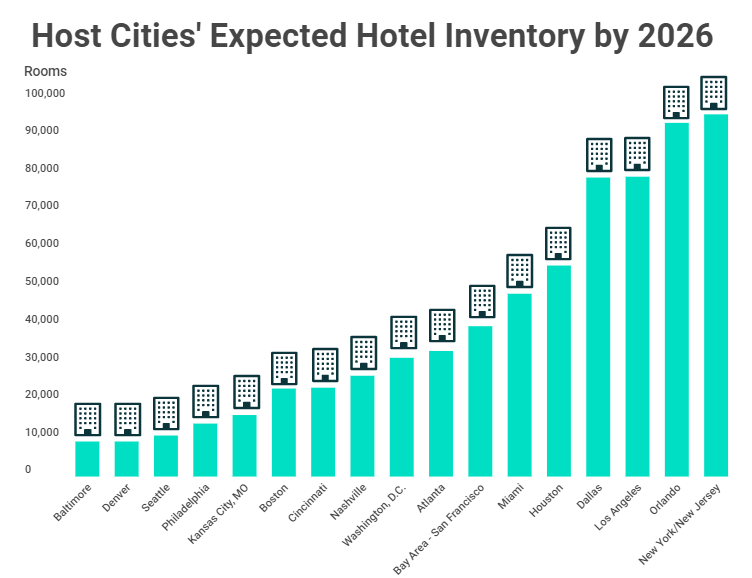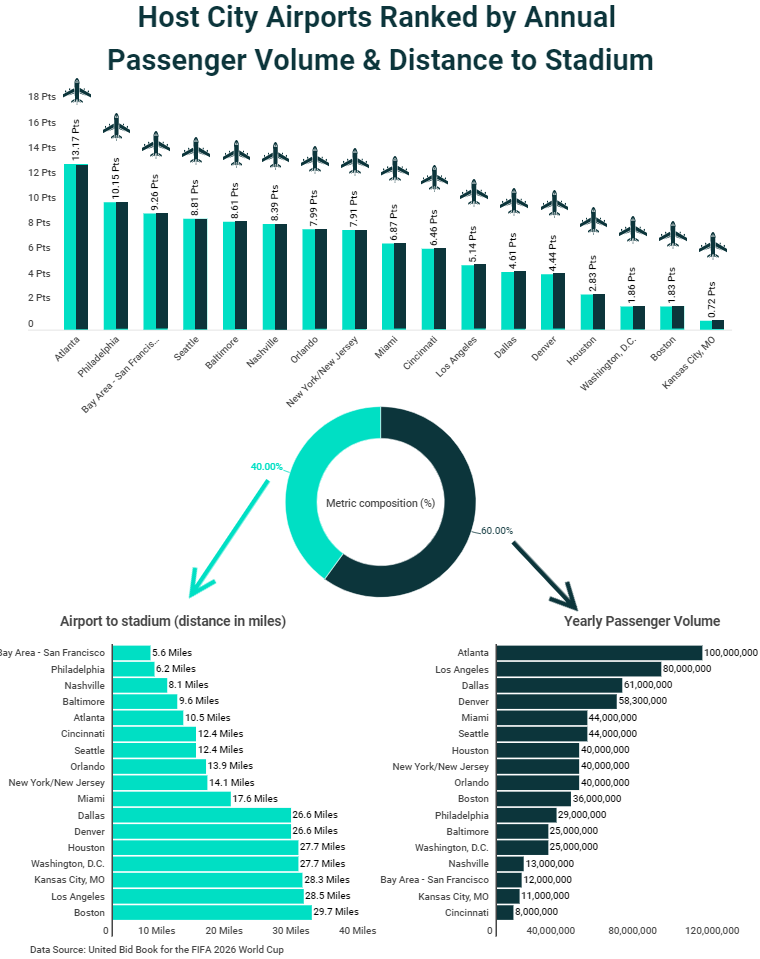This autumn, roughly half of the globe’s population is expected to tune in to watch soccer’s most prestigious tournament: The 2022 World Cup. The event is so significant that, whenever comparisons about the magnitude of it come up, pundits usually bring up the idea of multiple, simultaneous Super Bowls or the Summer Olympics.
But, there are more important reasons for Americans to pay attention to this game than just impressive viewership. That’s because, more than 30 years after it first hosted the World Cup in 1994, the U.S. — in a joint bid with Canada and Mexico — won the right to host the 2026 Soccer World Cup. And, with 60 of the tournament’s 80 total matches scheduled to be hosted in the U.S., various cities have jumped at the chance to boost their public image; highlight their public and sporting infrastructure; and generally create a buzz around the event.
42floors analyzed a set of seven metrics that would allow them to better gauge the technical capabilities of each of the 17 U.S. cities that have placed bids to meet the organization’s selection criteria. The indicators analyzed include:
- Stadium capacity
- Fan Fest venues
- Training facilities
- Hotels
- Broadcasting capabilities
- Public transit usage
- Airport passenger volume and distance from stadium

Stadiums

Fan Fest Venues

Training facilities

Broadcasting

Public Transit
In this area, New York/New Jersey is in the pole position once again. Despite the vast infrastructure resources put forward by this joint bid, the sheer size of the crowds that would need to be handled during match days has pushed the New Jersey Transit Board to devise a new transit concept to replace or augment the existing rail line. This would prevent a repeat of the transit fiasco during the 2014 Super Bowl, when crowds had to wait for hours for shuttle trains out of the stadium.
Next, Washington, D.C. and Boston tied for the runner-up spot. In particular, the capital boasts the third-largest rail transit system with Amtrak, as well as the sixth-largest bus network in the nation. Here, public transit usage stood at 13.4% in 2019.
Hotels

Airports

Source and methodology here.






